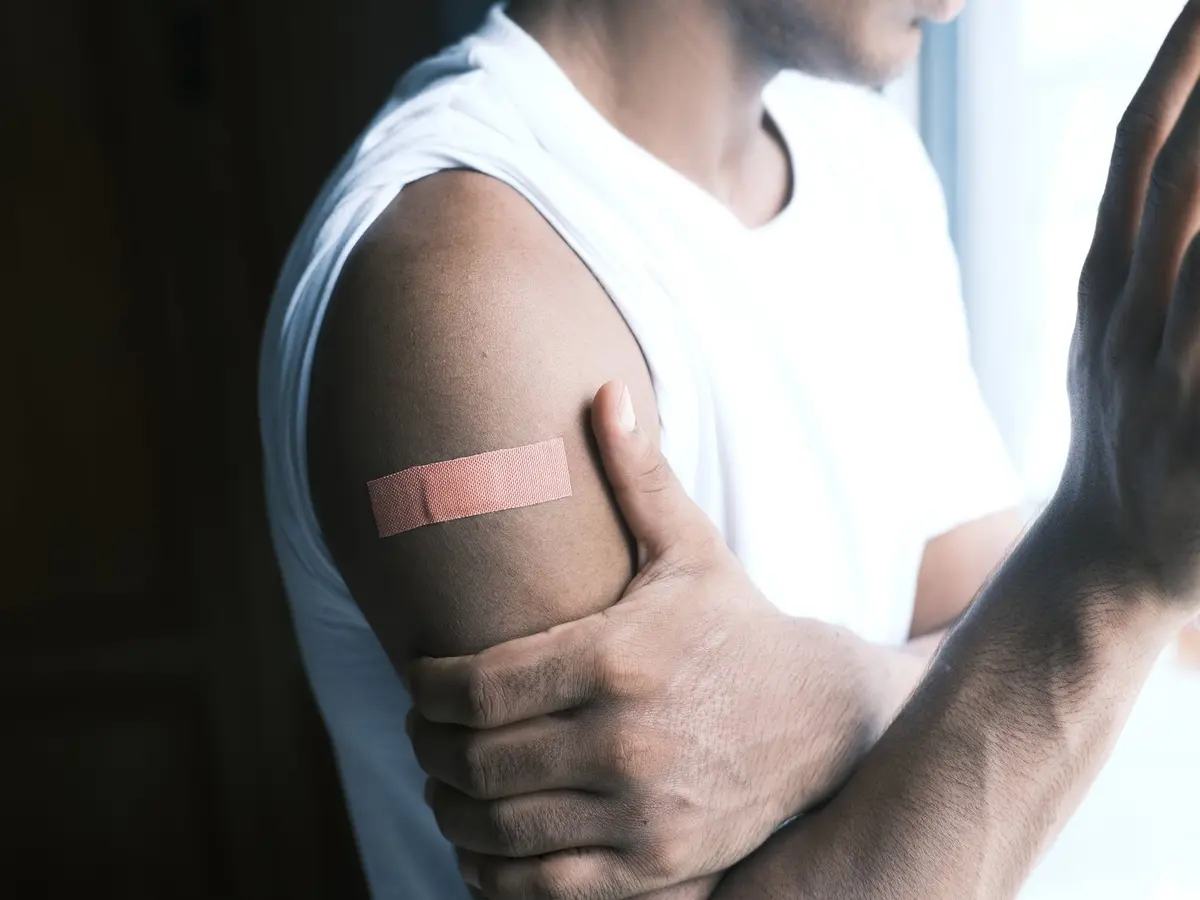Learn what is transdermal drug delivery system with advantages and disadvantages of TDDS. In this skin delivers the drug into bloodstream.
A transdermal or skin patch is a medicated adhesive patch that is applied on the skin to deliver a specific dose of drug into the systemic circulation through the skin.
What is transdermal drug delivery system?
It is controlled drug delivery system which offer a non-invasive and controlled way to deliver drugs through the skin for systemic therapeutic effects. In TDDS the drug is applied as “patches”.
TDDS maintains the drug concentration within the therapeutic window. It maintains the concentration of drug for prolonged time of period to ensure that the drug levels neither below the minimum effective concentration nor exceed the maximum effective concentration.
This method has several advantages, such as avoiding the first-pass metabolism, providing a steady release of the drug and improving patient compliance.
Permeation through skin
Skin is the most extensive organ in human body. The skin has multiple layers, including the corneum, epidermis and dermis. The skin receives about 1/3rd of circulating blood.
The outer most layer stratum corneum is the primary barrier to drug permeation. For a drug absorption transdermally, it must cross these layers and reach the systemic circulation.
Factors affecting permeation
- Small and lipophilic molecules cross the skin layers easily.
- Hydrophilic drugs face challenges in lipophilic stratum corneum.
- Concentration influences drug permeation.
- Thick and diseased skin affects permeability.
- Higher temperatures enhance permeation, but excessive heat damages skin.
- Formulation pH influences drug ionization and permeation.
- Hair follicles and sweat glands act as additional drug permeation routes.
Permeation enhancers in tdds
Permeation enhancers are substances that facilitate and improve the absorption of drugs through the skin.
Chemical Enhancers: Penetration enhancers like fatty acids, surfactants and terpenes modify the stratum corneum to enhance drug absorption.
Physical Methods: Techniques such as iontophoresis, electroporation and ultrasound can enhance permeation by temporarily altering the skin barrier.
Basic components of TDDS
Various components of TDDS are as follows:
- Polymer matrix/drug reservoir.
- Membrane.
- Drug.
- Permeation enhancers.
- Pressure-Sensitive Adhesives (PSA).
- Backing laminates.
- Release liner and other excipients.
Polymer Matrix/Drug Reservoir:
This is the backbone of TDDS system. It contains the drug and is designed to provide controlled release over time. For example, cellulose derivatives, polybutadiene, polyvinyl alcohol etc.
Membrane:
In TDDS a membrane acts like a barrier, enclosing the drug. It can be sealed to the backing or used alone in the patch. The membrane controls how the drug gets to the skin. Materials like ethylene vinyl acetate, silicone rubber and polyurethane are often used for this.
Drug:
In Transdermal Drug Delivery Systems (TDDS), selecting the right drug is crucial. For an ideal drug, these physicochemical properties and biological properties should present.
- Molecular Weight: <1000 Daltons.
- Affinity: Should have affinity for lipophilic and hydrophilic phases.
- Melting Point: Low melting point.
- pH Consideration: Solutions with pH 4.2-5.6.
- Half-Life: Short half-life.
- Non-Irritating and Non-Allergic: No irritation or allergies.
- Metabolism: Suitable if degrades in GIT or undergoes hepatic first-pass metabolism.
Permeation enhancers:
In TDDS, permeation enhancers improve drug delivery by increasing the skin permeability. These agents interact with the stratum corneum (SC) layer and modify its barrier functions and increase permeability.
Pressure-Sensitive Adhesives (PSA):
Pressure-Sensitive Adhesives (PSAs) in TDDS include gentle force and forming of bonds with the skin. Examples include polyisobutylene-based, acrylic and silicone-based PSAs.
Backing Laminates:
It protects the TDDS from external factors and provides structural support. Vinyl, polyethylene, polyester films, aluminum and polyolefin films are some examples of backing materials.
Release liner:
This protect the adhesive layer before application and is removed before use.
Other excipients:
Additional components that may include stabilizers, penetration enhancers or other formulation aids to optimize drug delivery.
What are advantages and disadvantages of transdermal drug delivery system?
Advantages:
- Skips stomach absorption issues.
- Useful when vomiting or diarrhea occurs.
- Bypasses first-pass liver metabolism.
- Non-invasive and no needles required.
- Increase compliance with one application.
- Extends short half-life drug activity.
- Quickly stops therapy by removing the patch.
Disadvantages of TDDS:
- May cause skin irritation which leading to treatment stoppage.
- Only potent drugs can penetrate through the impermeable skin.
- Some patches, like scopolamine can be uncomfortable behind the ear.
- Transdermal patches do not provide long time adherence.
Also read What is Implantable Drug Delivery System (IDDS)? What is mucosal drug delivery system?

